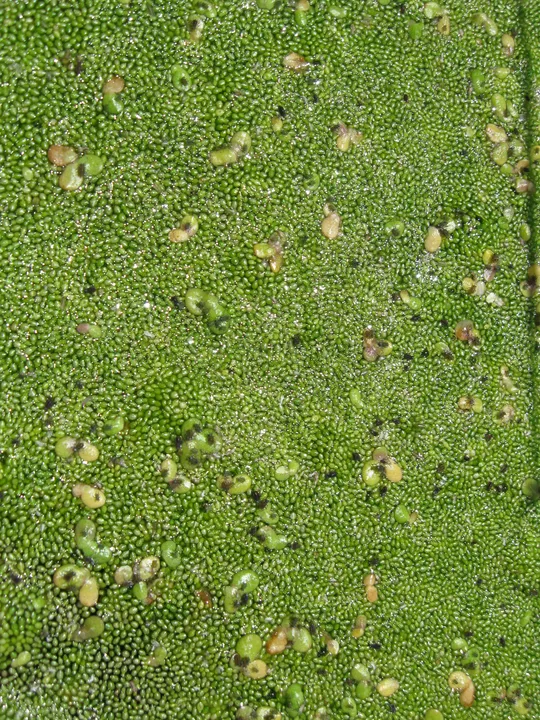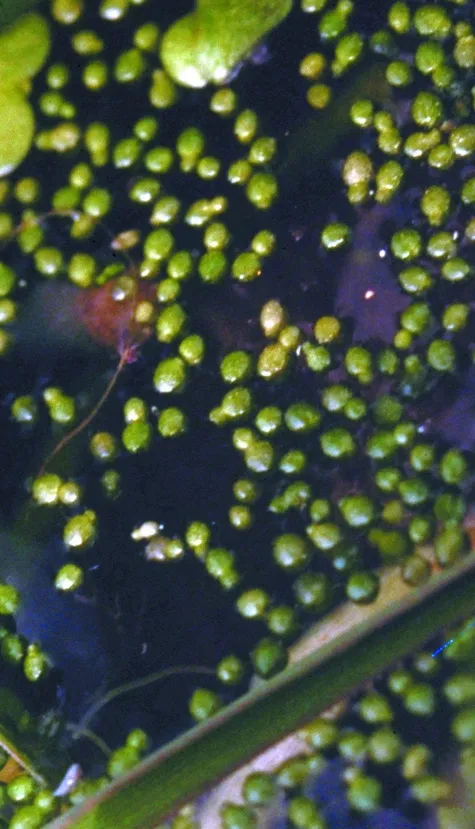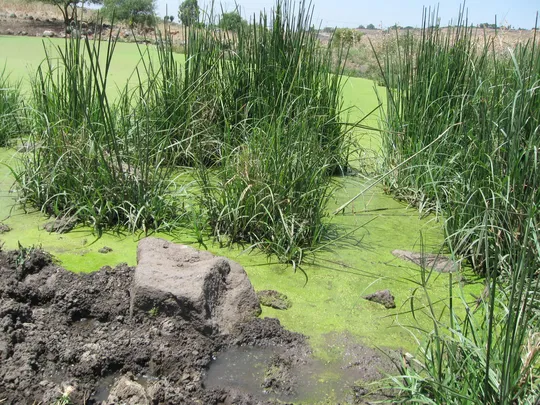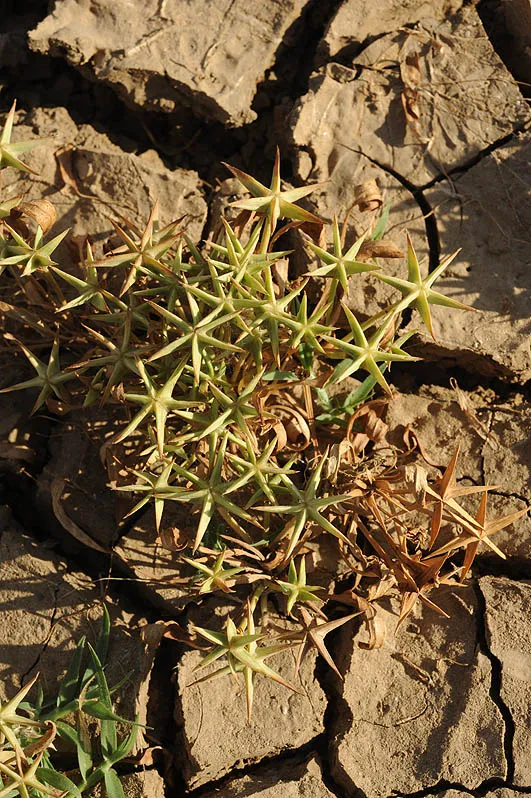Rootless Duckweed, Spotless Watermeal
Wolffia arrhiza



Wolffia arrhiza
can be eaten after cooking and is very rich in proteins, carbohydrates, fats
and vitamins. It is also used as fish food. The species, like other species in
the Lemnaceae family,
is also a good fodder plant, especially given its high protein content. It is also
effective in purifying wastewater.
Wolffia arrhiza is found today only
in the Golan. In the past, it was collected in the Sharon, from the Batih Pond, northeast of Hadera, where it is
now extinct. In the Golan, it was observed during last 25 years at 20 sites in
springs and ponds, especially in the central Golan. Hyman (1981, and pers.
comm.) reported several sites of W. arrhiza in the Zavitan
Stream basin at altitudes of 350-900 meters.
Water surface of
ponds, puddles and fresh water canals. Sometimes grows together with species of
Lemna. According to Hyman (1981) Wolffia
arrhiza is a major component of the “Lemna gibba - Wolffia
arrhiza”
plant association typical of slow flowing streams in the
Golan. L. gibba is usually dominant in the spring, and as water
temperature rises, or possibly due to the reduced flow, W. arrhiza
develops and dominates the water surface. The appearance of W. arrhiza
is probably related to well-lit, open bodies of water, and according to Hyman
(1981) only in places with flowing water. Nevertheless, it was also found in standing
water, such as the Sumka Reservoir in the northern
Golan Heights. As a rule W. arrhiza plants float in
open water where there are no other rooted aquatic plants, but it occasionally appears
in shallow streams with slow flowing water, which are generally dominated by Nasturtium
officinale and Apium nodiflorum, with W. arrhiza plants
scattered in semi-shaded conditions between them.
The genus Wolffia has seven species found throughout
the world. Like the other genera in the Lemnaceae family,
W. arrhiza also has a thallus-like
body, a combined stem and leaf structure that is shaped like a small
leaf floating on the water. Unlike other genera in the family, such as Lemna
and Spirodela, the Wolffia species have no roots
and W.
arrhiza
is the smallest flowering plant known in nature.
In the Middle East, there are two species of Wolffia.
The second species is Sudanian-tropical and grows only in the Nile River system
in Egypt.
·
The
major threat to Wolffia arrhiza populations is the drying
of ponds and springs in the Golan Heights, resulting from impounding water in
reservoirs and the decline in water levels.
Trampling by cattle in puddles and ponds damages the plants.
·
The
populations are fragmented and several kilometers apart, according to the
location of the water sources. Population density fluctuates seasonally and
annually: sometimes the water surface area is almost completely covered (together
with Lemna gibba)
and at other times, only a few plants are found.
·
The
species is very common in the world, and is not globally endangered.
Ponds and springs in the Golan should be protected and trampling
by cattle should be prevented. Wolffia arrhiza
should be reintroduced and naturalized in wetlands in the Sharon, such as the Ya'ar or Dora ponds.
Wolffia arrhizais is distributed
over extensive areas in the Old World: throughout Europe, the western Mediterranean,
the Maghreb countries, the Black Sea countries, equatorial Africa, India,
Malaysia, the Philippines and Australia. In the Middle East, it grows only in
Israel and northern Iran.
Wolffia arrhiza is
a floating aquatic plant, the smallest flowering plant in the world. Its distribution
is currently limited only to the Golan, where it is threatened by the reduction
of flow in springs resulting from water impoundment in reservoirs and trampling
by cattle. Reintroduction and naturalization of W. arrhiza
in the Sharon should be considered.
היימן, ר.1981. הצומח של מקווי המים בגולן. עבודת גמר,המחלקה לבוטניקה, האוניברסיטה העברית, ירושלים.
ויזל, י. וליפשיץ, נ. (1971). צמחי מים בישראל. הוצאת רשות שמורות הטבע.
Current Occupancy Map
| 1000 squre meter pixel | 5000 squre meter pixel | 10000 squre meter pixel | |
|---|---|---|---|
| number of observations | 0 | 0 | 0 |
| in total pixels | 0 | 0 | 0 |
| Family | Lemnaceae |
| Classification | On the endangered species list |
| Ecosystem | Mediterranean humid |
| Chorotype | Multi-regional, Northern and Tropical |
| Conservation Site | En Sumka in the Enot Orvim Nature Reserve |
| Rarity |
1
2
6
|
|---|---|
| Vulnerability |
0
4
4
|
| Attractiveness |
0
0
4
|
| Endemism |
0
0
4
|
| Red number |
1
3.2
10
|
| Peripherality | 0 |
| IUCN category | DD EW EX LC CR EN VU NT |
| Threat Definition according to the red book | Vulnerable |
 Based on:
Based on:






